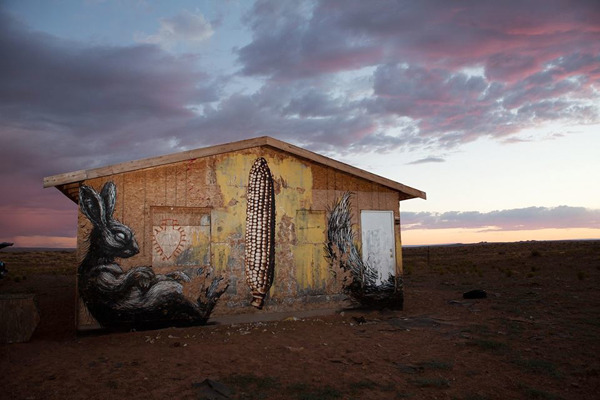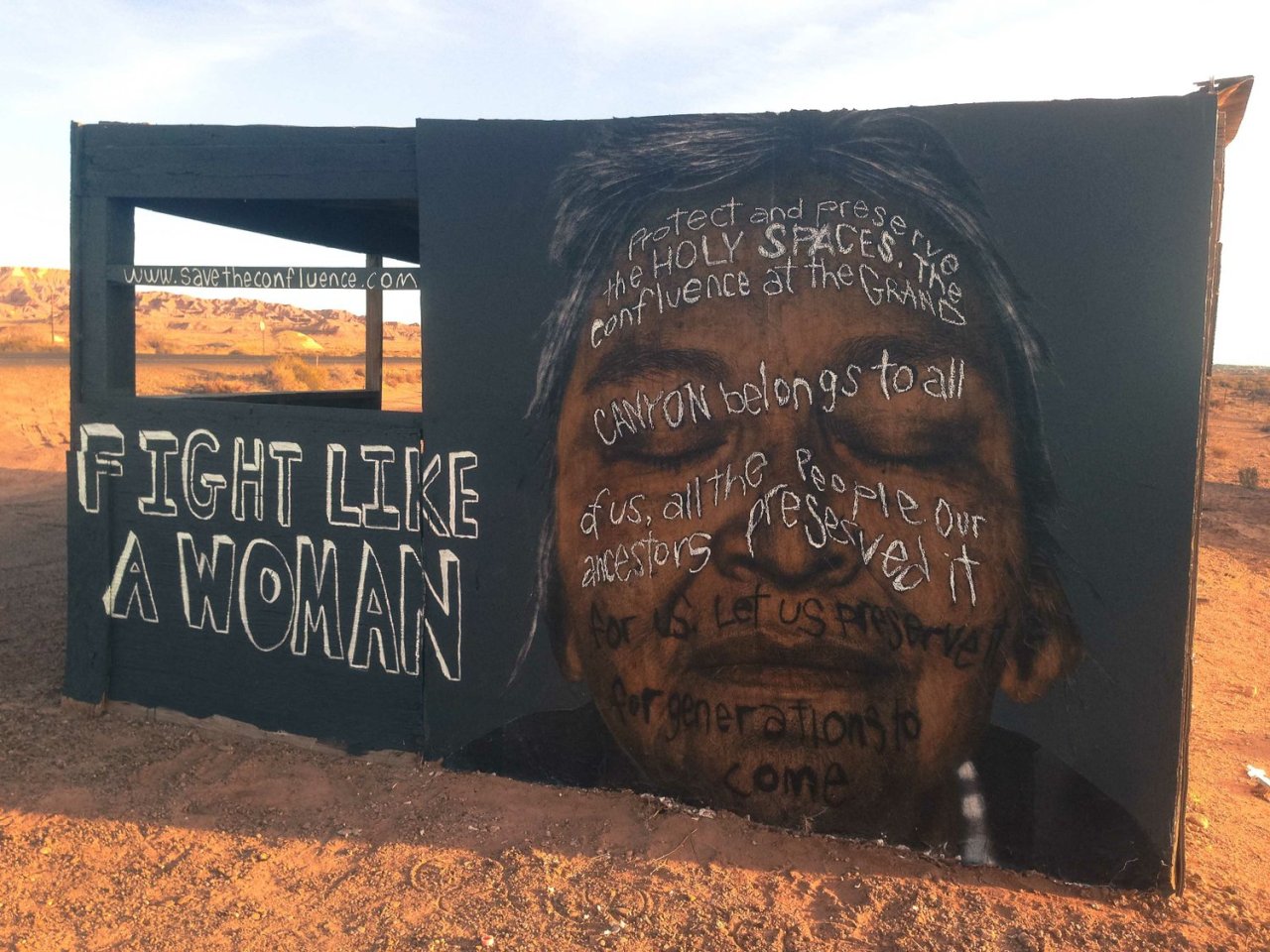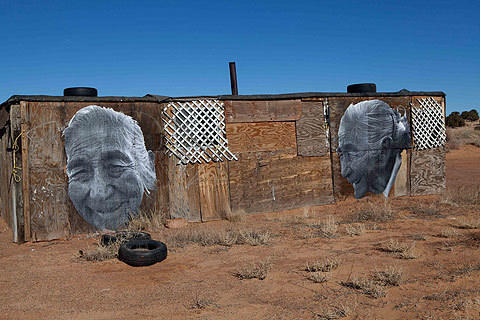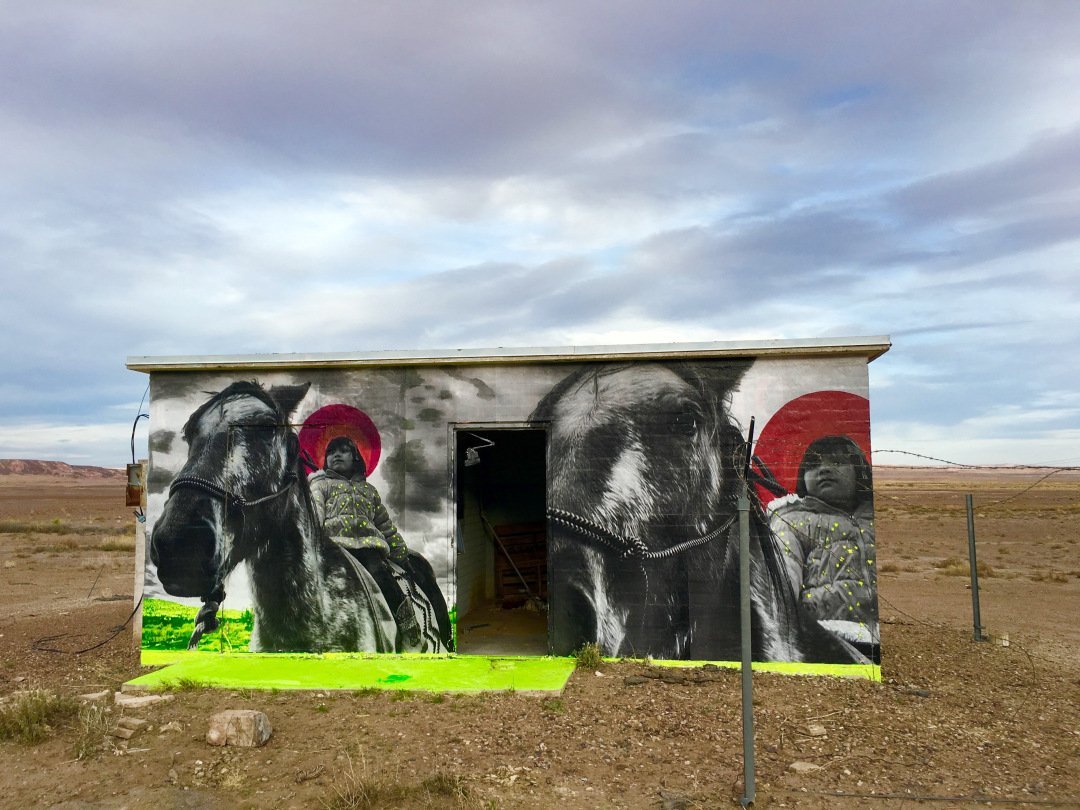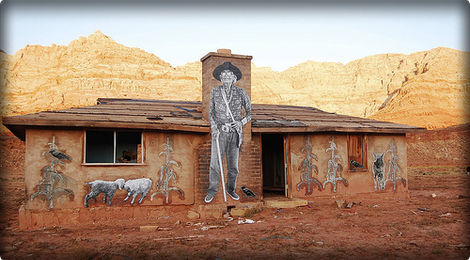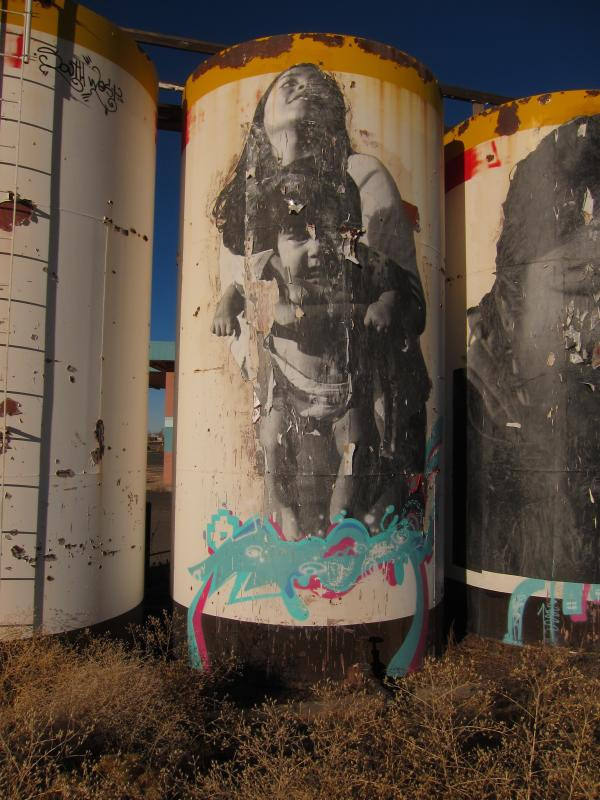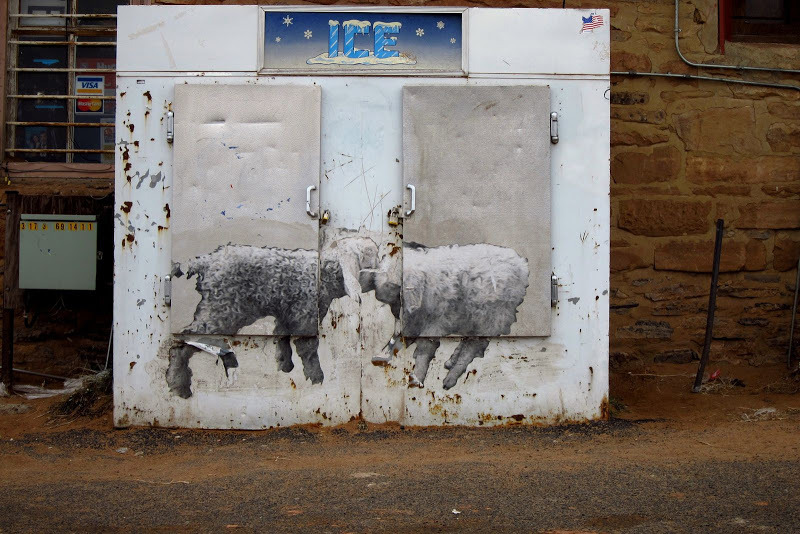Every winter, during the second week of February, tribal college presidents, student representatives, and a myriad of others passionate about tribal education trek out to Washington, DC to visit Capitol Hill for National Tribal College Week. This week, also referred to as the American Indian Higher Education Consortium (AIHEC) Winter Meeting, is an intense hive of advocacy, House and Senate meetings, and networking. Everyone who attends these meetings serves the larger purpose of moving tribal colleges forward, which in turn helps move Native communities forward.
One of the more compelling aspects of the winter meeting is the unique role that students play. Each of the 37 tribal colleges and universities (TCUs) participating can choose to send a student or students to DC; these students then accompany their college’s representatives to various advocacy workshops, committee hearings, and congressional delegation meetings. It is at those meetings where the key mission that students serve becomes apparent. This is where they share their tribal college journey with others. By sharing their own narratives, students are empowered and provide a moving testament to the diverse and often misunderstood impacts of TCUs.
OWNING MY STORY
In 2014, as the outgoing Diné College student body president, I was fortunate enough to receive an invitation to AIHEC’s winter meeting. I admit I wasn’t entirely sure what “Capitol Hill advocacy” entailed; words like advocating, legislating, and policymaking can sometimes take on nebulous definitions. After some prodding for a clearer description of my role, I was informed that I would be there to share my story about how tribal colleges affected me.
I spent the next few weeks mulling over this, namely, how would my story benefit anyone? It’s a winding and weird narrative. It lacks the glamour of Western success and perfect scores; it is void of the genius of wunderkind and the cheery comfort of normal. Dormant worries that I held prior to stepping foot on a tribal college campus began to creep in. Worries that I wouldn’t talk right, I wouldn’t look right, I wouldn’t act right. I just wouldn’t be right.
Up until that point, my knowledge of AIHEC revolved primarily around the annual spring student conference, which is a large gathering for tribal college students to bond and compete in various events. I attempted to compensate for my unfamiliarity with AIHEC by poring over the organization’s website and various related links mined from Google searches, hoping to gain more insight as to what I would be getting involved in. One of the most informative resources is AIHEC’s preliminary pre-meeting webinar. From logistics such as hotel accommodations and meeting times to detailing advocacy strategies and underscoring the key goals of the meetings, the webinar helped us prepare for Capitol Hill.
This preparation certainly helped me navigate the alphabet soup that is DC vernacular: from DOI, BIA, BIE to AICF, AIMS, TCUP, the acronyms flow freely. It also helped me grasp the general idea of what higher education funding looks like in the federal context. Yet, one thing that reading material couldn’t prepare me for was the sheer scope of issues surrounding American Indian higher education. While AIHEC’s importance is evident at the student conference, the organization’s power and magnitude are on full display in Washington, DC. From highly scheduled itineraries packed with meetings with U.S. Senators and House Representatives to the breadth of institutional knowledge TCU presidents shared during our visits, National Tribal College Week was like a deep-sea dive for someone like me who was used to splashing around in puddles.
FINDING MY PLACE
In a place like Capitol Hill where there is an array of issues at any given moment, it can be easy to get lost in the shuffle. Tribal colleges in particular face an assortment of unique issues that are often overlooked or else misunderstood—whether because of a complete disregard for community definitions of success or a clumsy attempt to measure us with the wrong metric. By having students there in person, sharing their own stories, whole new dimensions can be added to people’s perceptions of what a tribal college is and what success truly means to some of us.
Yet how would or could my story benefit anyone when it feels so undone and unpolished? How does one package all of the confusion, anger, frustration, elation, and joy I’ve experienced into a neatly composed soundbite? You simply must speak of what you know.
In my case, what I knew was how at Diné College someone told me for the first time that I was more than smart, that I was a “good egg.” How I had a bed and a room and I didn’t have to worry about where I was going to sleep for the next few months. How I could just focus on the tasks at hand and how I was free to pursue my curiosities and figure out what I wanted. How I could ask questions and people didn’t chide me for not knowing what the GRE was or how to fill out an application for federal student aid. Nobody tried to touch my hair, tell me about their Cherokee princess grandmother, or refer to me as Pocahontas. Nobody gasped when I talked about my childhood like it was some absurd reality or pushed me to leave the reservation for “opportunity.” Instead, people encouraged me to create opportunity on the reservation. I went to school with students who understood, with faculty who understood.
SOME ADVICE FOR THE JOURNEY
If I am able to provide advice for tribal college students on the AIHEC winter meeting, I would say first that if you are offered this opportunity, take it. In fact, with most opportunities in life, take them. Don’t be swayed by the “imposter syndrome”: don’t fall into the self-defeating trap of questioning whether you look or sound the part, wondering what you have to offer, or worrying about measuring up to others. Remember, your story is important. You matter.
The second tip is to take advantage of this opportunity to network with other students and organizations in Washington. On the first day of Tribal College Week, there is an open AIHEC Student Congress (ASC) meeting held at night to which all students are invited. I realize the lure of sightseeing around the nation’s capital or going out to eat is tempting, but you will have other chances to do that during the week. Attending the ASC meeting is the main opportunity to voice your opinions to your peers, to brainstorm, to network, to hear what is going on at other TCUs, to talk to your student congress and find out how you as a student are represented. And find out why you are there! What are the priorities that AIHEC is looking to promote? You want to be prepared and informed. Check the AIHEC website periodically before your trip for more information and any changes to the itinerary.
Another piece of advice: dress professionally. Wear clothes that make you sit up just a little bit straighter, whether that means traditional wear or an ironed button-down with your grandmother’s necklace. During my first trip to Washington, I didn’t have a clue what to wear, as my closet was primarily host to faded hoodies and beat-up sneakers. I couldn’t afford to invest in a suit at the time, but I was able to find a blazer at a thrift store. I proudly wore jewelry from my family and paired this with my wrapped moccasins that I had made in class. I recall the seam breaking on my moccasins and borrowing dental floss from a student at the hotel so I could repair them at the last minute.
I admit I had never worn a suit before and at first I felt nervous, like I was committing fraud by wearing such a costume. I had this ridiculous worry that someone would see me in my suit and just know that I didn’t belong. Granted, I did find out the hard way that you’re supposed to cut those white strings on the blazer vents and that you should never substitute tape for a lint roller. But the point of this is to be proud and comfortable in what you are wearing, whether it’s a thrift store blazer or a woven biil dress. Your clothes merely serve to border the picture that is you and your story. Your words and how you conduct yourself are really what matter.
Also, keep in mind the amount of security you will have to go through at the numerous government buildings. All your metalware, from belts to large jewelry, will have to come off each time you need to enter a building, and there will usually be a line of people waiting to get through the metal detectors behind you.
As for the weather, it rains a lot and sporadically so it might be worth packing a small umbrella. It is also winter in DC during Tribal College Week and therefore pretty cold, so bring a heavy jacket or wrap. In 2014, I thought I was being clever by just bringing a rain coat, thus saving me the hassle of dragging along my winter coat. However, the “snowpocalypse” storm quickly refuted this. We landed on a Sunday to clear skies and by Monday it was gray, with snow quickly piling up and intermittent freezing rain. We still had to walk to our meetings, albeit much more quickly. Don’t risk it: bring a coat—and gloves.
During your visits be on time! If this means setting multiple alarms and asking the hotel to provide you with a wakeup call, do it. Time in DC is monochromatic; things are very exact and focused. There is little to no concept of a grace period or a “maybe it starts around 2 p.m.” If you have 15 minutes to meet your senator and discuss budget cuts, you have 15 minutes to meet your senator and discuss budget cuts. Your congressional delegate serves a lot of people—it’s their job! So there are many other meetings they need to attend to and constituents they need to serve. Aside from time being so focused and precise, it is also scarce. Keep this in mind when sharing your story. For some states like Montana and North Dakota, where there are a larger number of tribal colleges, your meetings will be tightly packed and choreographed. There are multiple schools, students, and representatives in each meeting, so to avoid wasting time in front of the congressional delegates, a separate state meeting is usually held the first day of the Capitol Hill visit. During such visits, speakers are assigned orders and representatives are chosen. Montana, for example, has more TCUs than any state with seven; this means that it is especially imperative as a student representative to be mindful of your time limit. If you are at a 15-minute meeting with 9 minutes devoted to sharing student stories, and there are three students selected to speak, this means that you will have 3 minutes to share your story, unless you are told otherwise. Please be mindful of the other students whose stories are equally important and allow them time to share also.
Remember why you are there. You will be talking to congressional delegates who might not align with you politically on all issues. This was perhaps one of the harder things for me to learn— to hold my tongue. Having to refrain from making comments about policies to your senator while she or he is listening to you might feel akin to starving inside a bakery. But one of the many things I have learned is that there is a time and place for everything. There is also a way to make your passions known without hijacking the purpose of these meetings. You probably wouldn’t go to a vegan restaurant to endorse hamburgers. So it might not be best to attend meetings centered on education to push for the environment.
With that said, you can still take advantage of the opportunity by talking to others. I felt so strongly about certain policies and wanted more information that I asked each of the representatives along with their staff interns if I could have their business cards. This networking led to an internship the following summer in DC, where I was able to research the very policies that bothered me. That was the appropriate place and platform to pursue my interests, as I was representing myself and not a larger organization.
At this point in my college career, I have been fortunate to attend three AIHEC Capitol Hill meetings representing two different tribal colleges and the AIHEC Student Congress. Since my initial meeting, my college track has changed dramatically: I have gone on to pursue internships in the capital, spending two intense summers interning through Quality Education for Minorities where I contributed to research on STEM (science, technology, engineering, and math) inclusion at TCUs, and landed an externship at the Indian Health Service headquarters in nearby Rockville, Maryland, which focused on civic media and LGBT issues. I have been invited to the White House a few times, including the 2015 White House Tribal Nations Conference, a 2016 Office of Science and Technology Policy meeting, and I was recently nominated to attend the White House Summit on the United State of Women. I also participated in an upcoming national PBS series focused on underrepresentation in the technology industry; introduced the Second Lady of the United States, Dr. Jill Biden, at the 2015 Achieving the Dream’s annual Institute on Student Success; traveled internationally for research under the National Science Foundation Partnerships for International Research; and I have spoken on numerous panels. Recently, I was a summer scholar at the National Science Foundation, focusing on data curation.
I have gone from confusing the GRE with GED to applying to graduate programs. My obnoxious loud behavior that stemmed primarily from just wanting to be heard has been curbed over the years. While at times I may still be a bit obnoxious, I don’t feel the tired drain of having to perform routines just to get people to listen. I am now in a position with opportunities—and offers! I am able to create opportunities for my peers and share what I’ve learned with my networks. I have set my sights on earning a Ph.D., and while still far off from accomplishing that goal, I feel confident that I can. Hopefully one day I can come back and teach at the very tribal colleges that helped me so much.
If I had to identify the pivotal experiences in my college education that have helped guide me to my current course, aside from having an amazing support network of TCU friends and internship mentors, I would single out attending Tribal College Week. This was more than just an intensive experience in policy and leadership. It also served a larger purpose: it helped me connect and create networks with other students while exposing me to a wealth of Indian Country leaders to look up to—from the various TCU presidents to distinguished faculty who have worked within their communities. It was where I realized that it is possible for people like me to one day create and affect change. Washington, DC and the world as a whole sometimes feel light years away, but they are actually just there waiting for people to seize opportunity. You just have to speak up.
- Robin Máxkii
Originally published in Tribal College Journal
https://tribalcollegejournal.org/storytelling-capitol-hill-recollections-recommendations-tribal-college-week/


